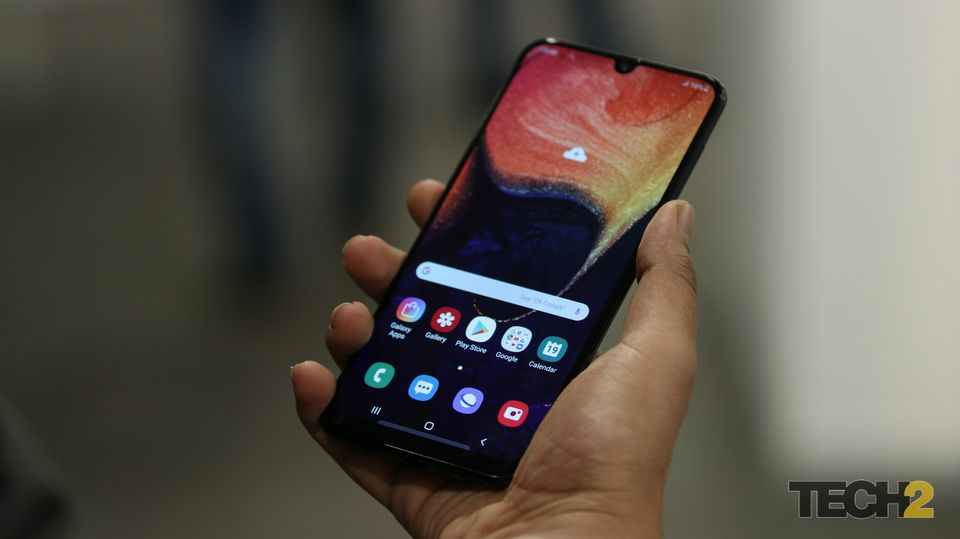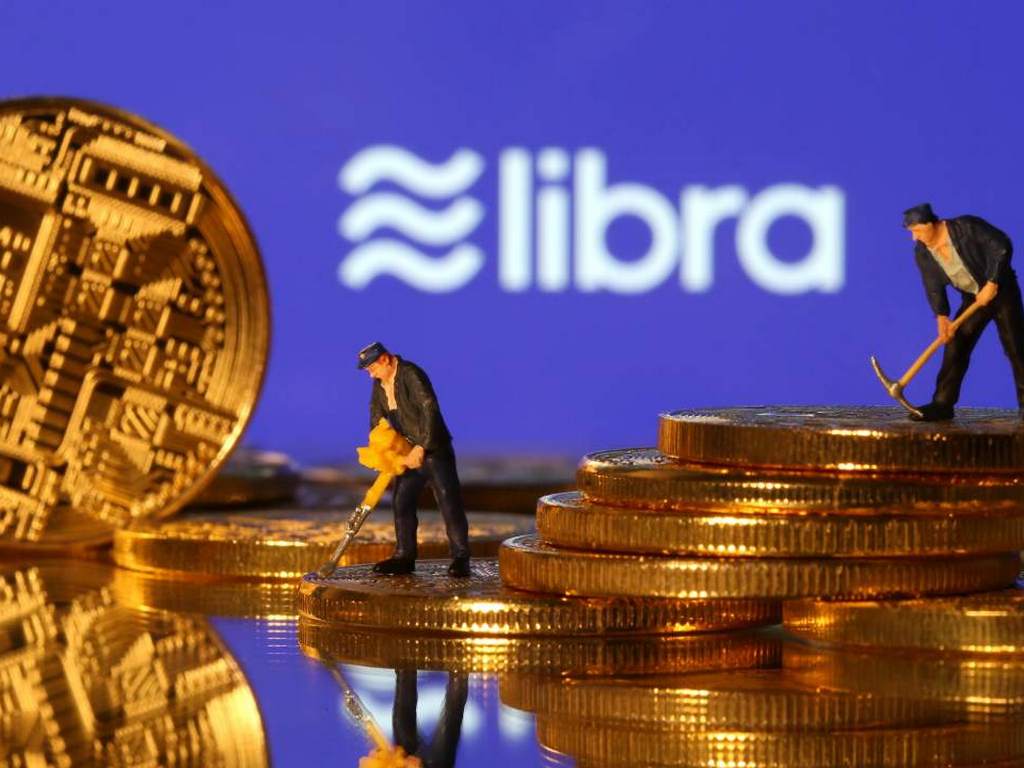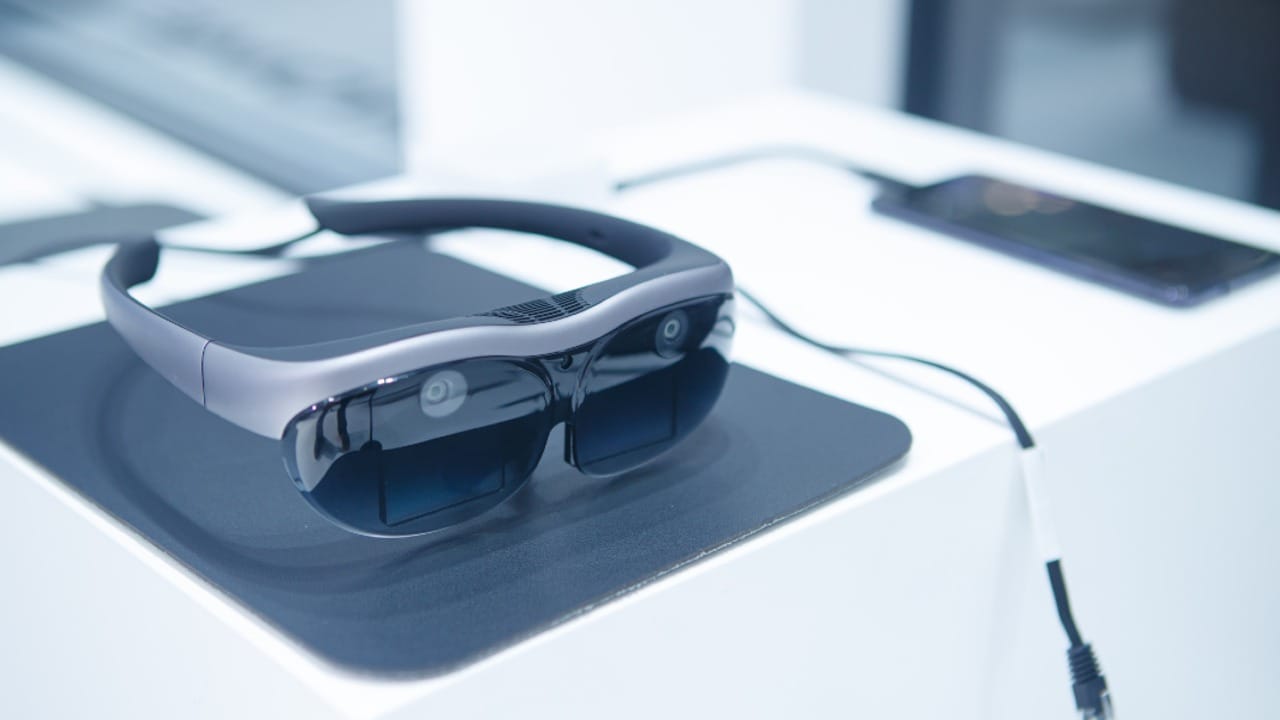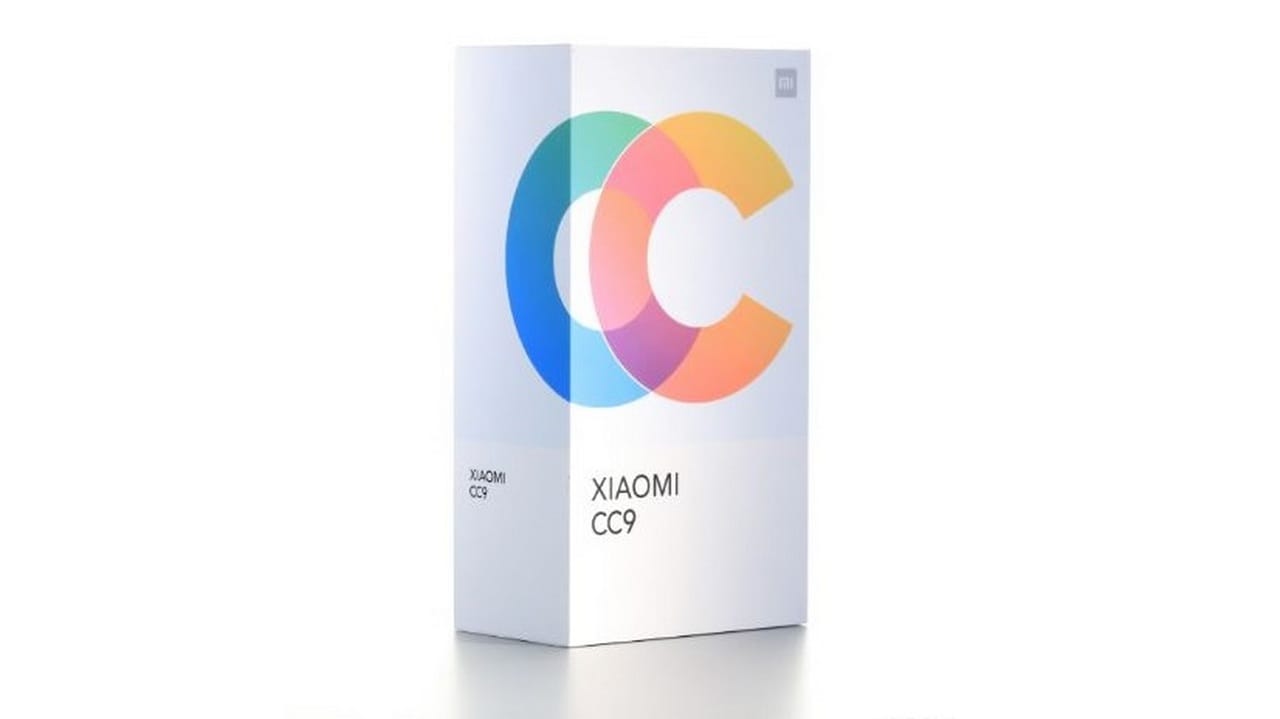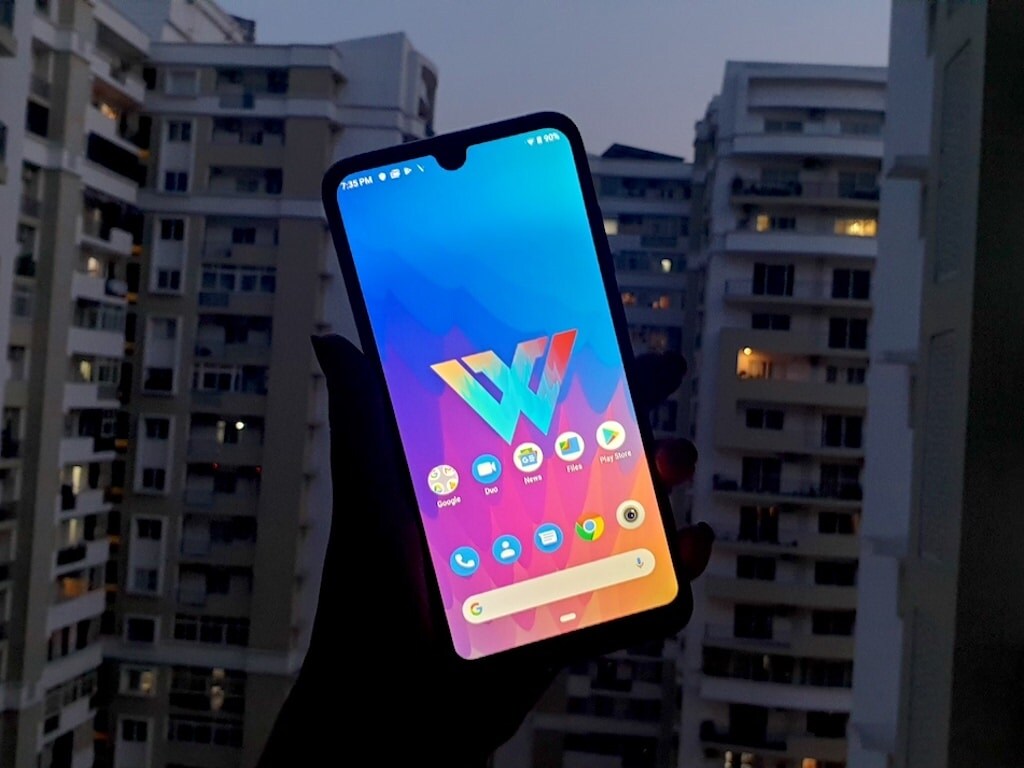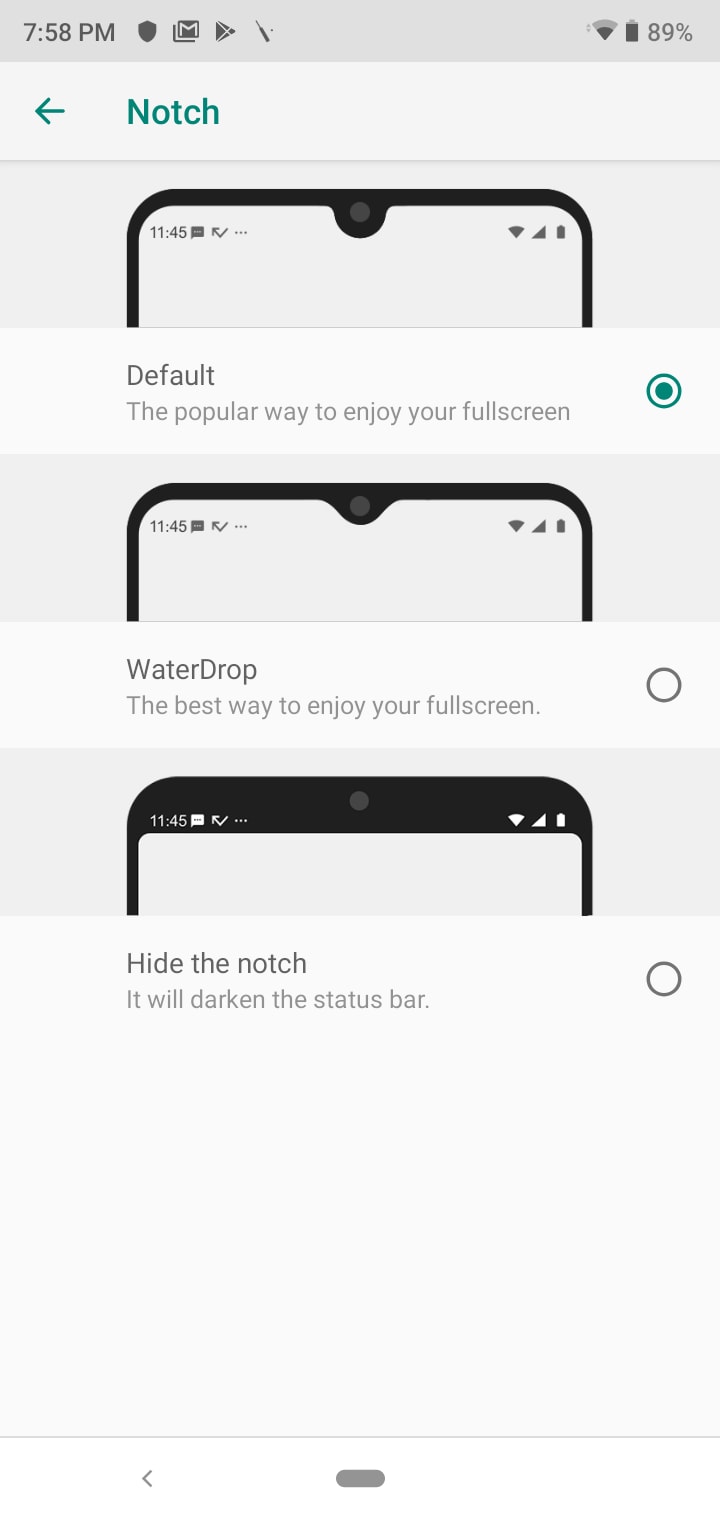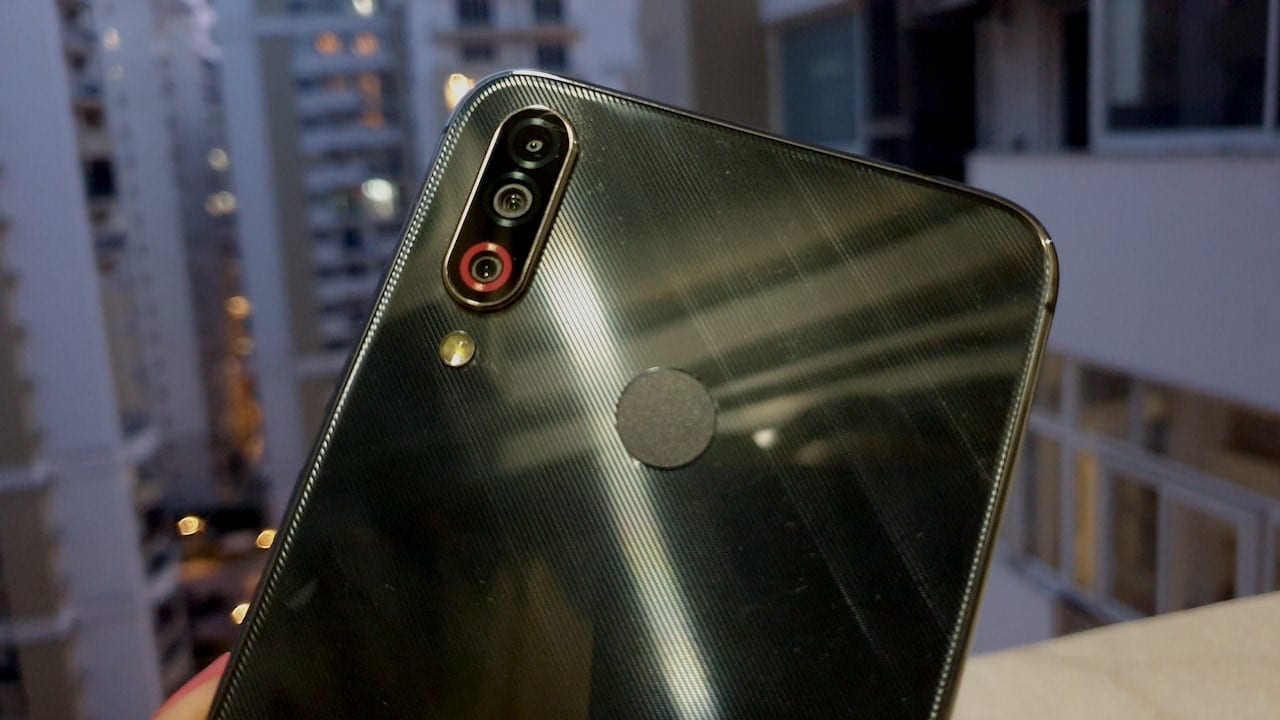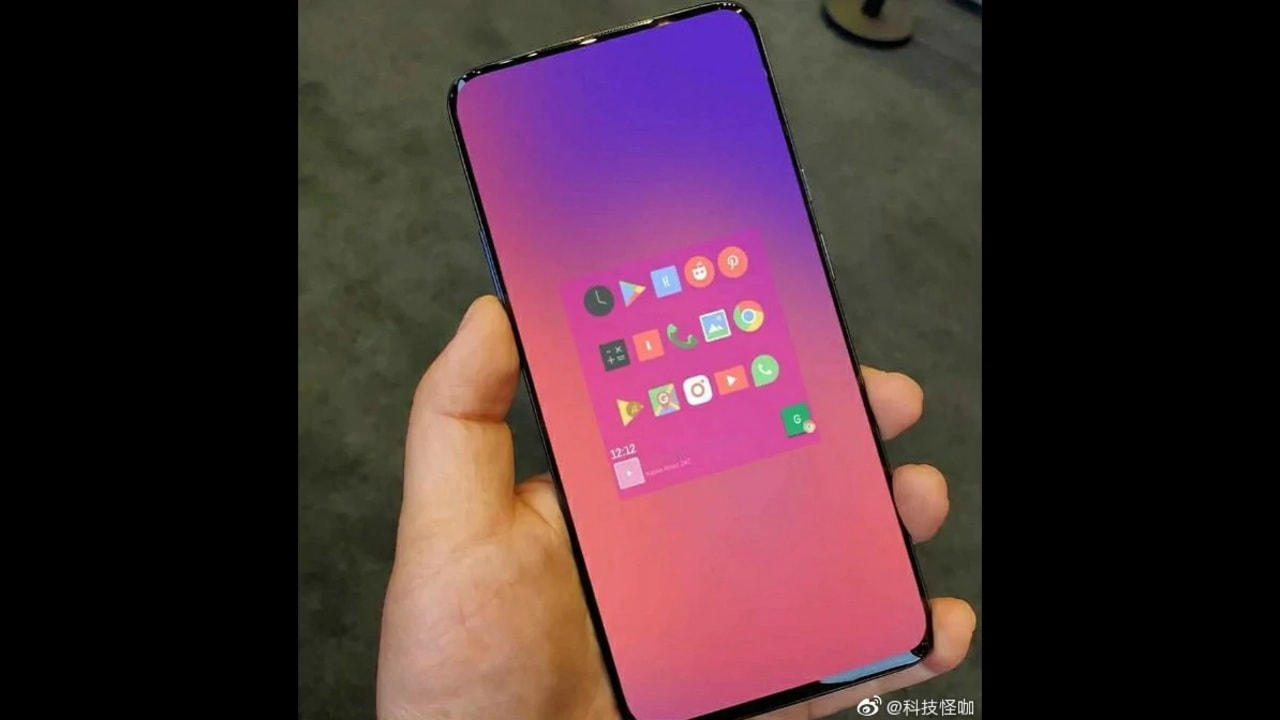Political figures using Twitter to threaten, abuse others will be slapped with warning labels
The Associated PressJun 30, 2019 15:50:34 IST
Presidents and other world leaders and political figures who use Twitter to threaten or abuse others could find their tweets slapped with warning labels.
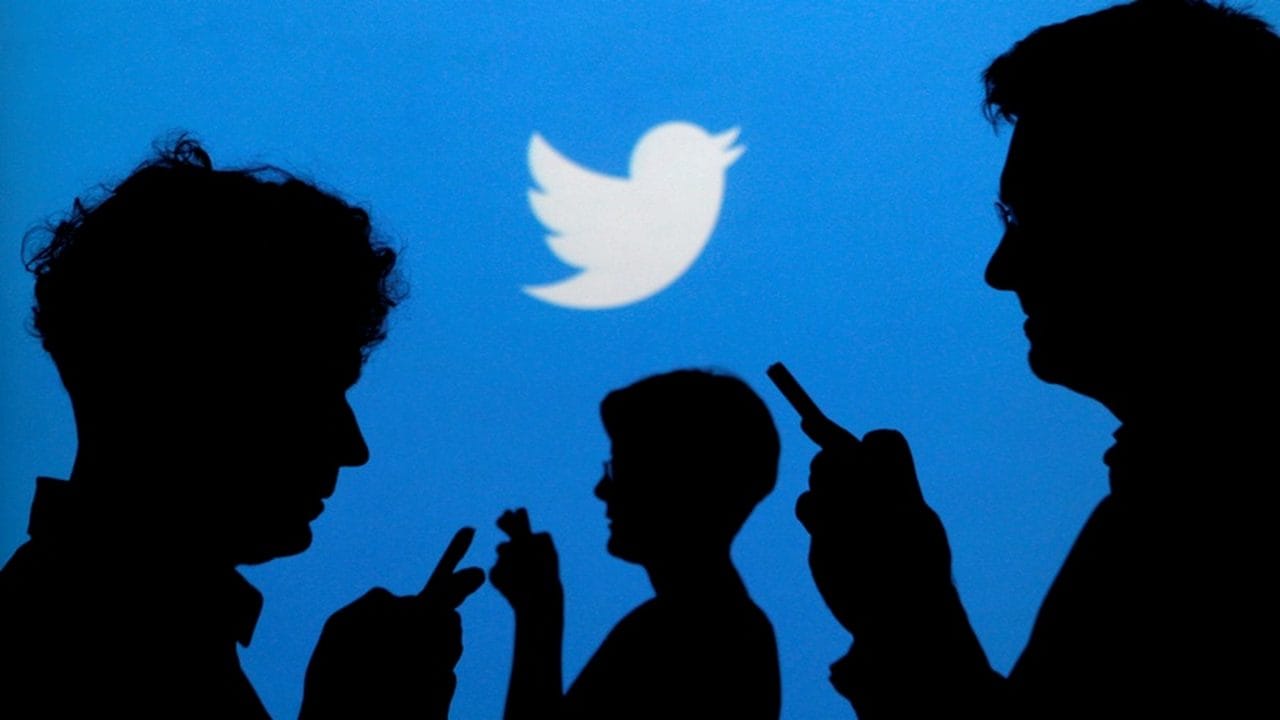
People holding mobile phones are silhouetted against a backdrop projected with the Twitter logo in this illustration picture taken September 27, 2013. Reuters
The new policy, announced by the company on Thursday, comes amid complaints from activists and others that President Donald Trump has gotten a free pass from Twitter to post hateful messages and attack his enemies in ways they say could lead to violence.
From now on, a tweet that Twitter deems to involve matters of public interest, but which violates the service’s rules, will be obscured by a warning explaining the violation.
Users will have to tap through the warning to see the underlying message, but the tweet won’t be removed, as Twitter might do with a regular person’s posts.
Twitter said the policy applies to all government officials, candidates and similar public figures with more than 100,000 followers. In addition to applying the label, Twitter won’t use its algorithms to “elevate” or otherwise promote such tweets.
“It’s a step in the right direction,” said Keegan Hankes, research analyst for the Southern Poverty Law Center’s Intelligence Project, who focuses on far-right extremist propaganda online. But, he added, Twitter is essentially arguing “that hate speech can be in the public interest. I am arguing that hate speech is never in the public interest.”
Twitter refused to comment on whether any of Trump’s past tweets violated its rules and would not say what role, if any, his Twitter activity played in the creation of the new warning-label policy.
The new stance could fuel additional Trumpian ire toward social media. The president routinely complains, without evidence, that social media sites are biased against him and other conservatives.
<!–
Tech2 is now on WhatsApp. For all the buzz on the latest tech and science, sign up for our WhatsApp services. Just go to Tech2.com/Whatsapp and hit the Subscribe button.
–>
Galaxy A50 gets new update which brings Night Mode, Slo-mo video and more
tech2 News StaffJun 30, 2019 10:49:52 IST
Samsung has just released a new update for the Galaxy A50 (Review) which has not only brought the June security patch update to the device but also another highly requested feature called the Night Mode.
The new firmware which happens to be 455 MB in size and has the version number A505FDDU2ASF2, also brings in Super Slo-Mo video recording. Night Mode, which was recently added to the Galaxy S10 and Note 9 smartphones, brings added usability to shots in low-lighting conditions.
However, the feature will not be instantly accessible to you even after the update has been completed. You will need to reset the camera settings to use it. Additionally, this update also adds the ability to scan QR codes from the camera app without Bixby Vision.
Galaxy A50 Specs
The Galaxy A50 is powered by an Exynos 9610 octa-core 2.3 GHz processor and features a 6.4-inch Super AMOLED screen with an aspect ratio of 19.5:9.
In terms of optics, the mid-premium Galaxy A50 boasts triple rear camera setup comprising of a 25 MP sensor with f/1.7 aperture and a 5 MP and an 8 MP sensor both with an f/2.2 aperture lens. Up front, it has a 25 MP camera sensor for shooting selfies and making video calls.
For security, the Galaxy A50 offers an in-display fingerprint sensor meanwhile, the Galaxy A30 has a touch capacitive rear-mounted fingerprint sensor. There is also a type-C port for charging the device.
<!–
Tech2 is now on WhatsApp. For all the buzz on the latest tech and science, sign up for our WhatsApp services. Just go to Tech2.com/Whatsapp and hit the Subscribe button.
–>
Facebook’s Libra cryptocurrency could be beneficial in developing economies
The Associated PressJun 29, 2019 11:03:03 IST
Europeans and Americans have their Visa and Mastercards. For everyone else, here comes … Libra?
Facebook’s new Libra digital currency is aimed at a huge potential market for financial services — the entire developing world, with billions of people in areas such as India and Sub-Saharan Africa, where financial services are often less sophisticated and many people don’t use traditional banking accounts.
Whether or not these billions will want to make the switch is anyone’s guess.
The U.S., Europe, and most developed economies already have large, efficient payment systems. These allow people to buy and sell goods in real time and send money person-to-person through services like Zelle, PayPal, and Venmo. That’s why the companies that joined Facebook’s Libra association, as well as nonprofits involved with similar projects, say Libra’s potential lies elsewhere.
In developing countries, many tens of millions still live far from a bank or money transfer center or currently use a currency prone to inflation or volatility. Libra could address this issue by providing a universal, stable currency that is easily transferrable between persons or businesses without involving setting up an entire payment infrastructure. It also potentially could work at a lower cost.
In the last decade, citizens of developing countries have widely adopted cellphones as a way to store money, sending text message-based payments either to businesses or persons. It’s been a broadly heralded development among policymakers and nonprofits focused on poverty because bank accounts are hard to come by or are too expensive.
“The entire continent of Africa skipped right over cards and went straight into mobile payments,” said Sanjay Sakhrani, an industry analyst with Keefe, Bruyette & Woods, who covers Visa, Mastercard, PayPal, and Western Union.
But these payment systems are often constrained by the type of cellphone carrier each person is using. It’s not uncommon in places like Africa to carry multiple cellphones in order to have the necessary access to the right money transfer system.
Libra could solve this problem by creating a universal currency that can be transferred across multiple cellphone networks and across borders. There’s also the issue of cost, which is cited by the World Bank as being the biggest issue with financial systems outside of developed markets. Facebook says Libra would have a near-zero cost attached to it.
The Colombian border city of Cucuta is one of the places where Libra could make a difference.
Every day, thousands of needy Venezuelans cross into this sweltering town to buy food and medicines that are scarce at home. For many, the first stop is Western Union, where they line up for hours to pick up cash sent by relatives living in abroad. The demand for cash remittances is so big in fact that migrants sometimes line up outside Western Unions the night before the branches open, sleeping on the sidewalk to keep their place in the queue.
Digital currencies could make it easier to transfer funds to these migrants with no bank accounts and save them hours of their time. Using them is also safer, says Typson Sanchez, a local software developer, because it prevents robberies.
But despite its obvious benefits, merchants in Cucuta have been slow to adopt digital currencies, and only a handful currently accept it.
“Merchants worry about the volatility” of currencies like bitcoin, says Sanchez, a software developer and co-founder of Panda Exchange, digital payments startup. Other merchants find existing digital wallets difficult to use and worry about its legality.
Sanchez hopes that Facebook’s Libra could help to overcome some of those obstacles. “They already have a very powerful platform with lots of users,” Sanchez says. “They will be able to reach everyday people who are not into technology. And that’s something that many companies haven’t been able to do yet.”
Vodaphone, the Europe-based cell carrier, has a large presence in Africa and other developing countries and operates its own mobile wallet system known as M-Pesa. Already a dominant carrier in Africa, Vodaphone sees the potential in Libra to enable customers to send money across borders at a much lower cost.
There’s a lot of room for improvement. The average fee on a cross-border remittance is around 7%, according to the World Bank, with places in Sub-Saharan Africa charging as much as 10% to send a money transfer.
Companies like Vodaphone and organizations involved with Libra like Mercy Corp and Women’s World Banking said they’ve joined at least in part to make sure they have a “seat at the table” in case Libra does take off as a payment method. Libra’s real-life use cases are still at least a year off, and much likely longer.
Some would argue that Facebook’s Libra is the wrong solution to the issue of accessing financial services in developing countries. In China, the dominant way to pay is WeChat and AliPay, two mobile apps that use messaging to send money either to a business or another person, at extremely low cost. Both apps are used by more than a billion people.
“That to me is the simplest solution for developing countries,” said Nicholas Economides, a professor of economics at the Stern School of Business, an expert in electronic commerce and payment systems. “You don’t need to create a whole new currency. You just need the right app.”
There’s a “well, why not?” factor into these companies’ involvement. Facebook asked for a minimum $10 million investment in Libra from its for-profit partners. For a company like Visa, which made more than $20 billion in revenue last year, the Libra investment is pocket change. In exchange, Visa gets insider access to Libra and its potential technologies, as well as a seat at the table.
Visa declined a request for an interview regarding its involvement in the project, but a spokesman pointed to a blog post one of its executives published Tuesday, in which the company’s interest is described as reflecting “a spirit of openness and curiosity.”
Mastercard has been looking into technology that underpins bitcoin and other digital technologies for some time, said Jorn Lambert, executive vice president of digital solutions at Mastercard. The company was attracted to Libra because it’s private, unlike bitcoin which operates on an open network, and it’s backed by reserve currencies.
“This is a thing that could provide real consumer benefits, particularly in the developing world,” Lambert said.
Women’s World Banking, a nonprofit focused on financial inclusion for women particularly in developing countries, also joined the association. WWB wanted to make sure the issues of women in developing countries — who are often less technologically literate than their male counterparts — were addressed.
“Women are more than half of the unbanked population in the world. We wanted to be at the table to address women’s needs,” said Karen Miller, vice president of knowledge and communications.
<!–
Tech2 is now on WhatsApp. For all the buzz on the latest tech and science, sign up for our WhatsApp services. Just go to Tech2.com/Whatsapp and hit the Subscribe button.
–>
Huawei will be allowed to buy products from US suppliers following Trump-Xi meeting
tech2 News StaffJun 29, 2019 15:40:25 IST
Huawei Technologies can finally take relax. After a gruelling month of facing bans and losing business relations with multiple clients across the world, the Chinese tech giant can start buying products from US companies.
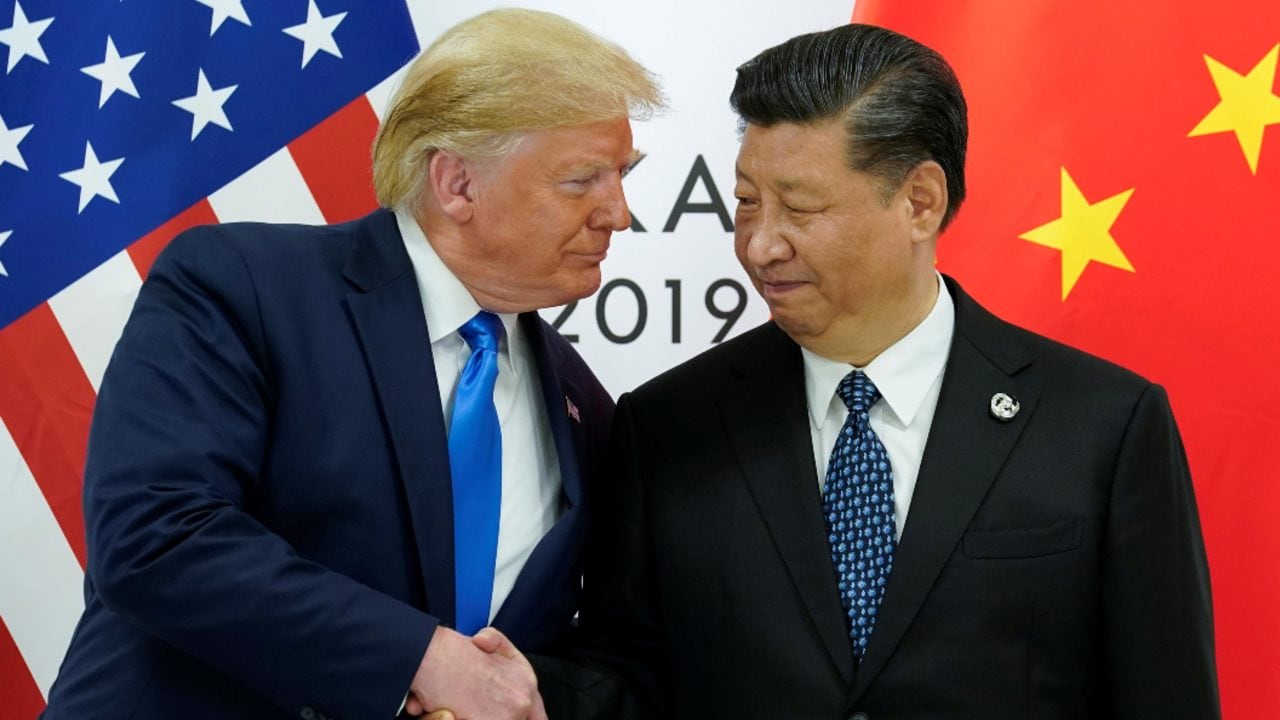
U.S. President Donald Trump meets with China’s President Xi Jinping at the start of their bilateral meeting at the G20 leaders summit in Osaka, Japan. Image: Reuters.
US President Donald Trump confirmed that US companies will be allowed to sell its equipment to Huawei, at a news conference during the international Group of 20 summit in Osaka, Japan.
In May, the US Commerce Department had placed Huawei into a trade blacklist that banned US companies from dealing with the Chinese company. Since then, companies including Google, Qualcomm, Intel, and many more cut off ties with Huawei. With Google stopping business, it meant that Huawei wouldn’t be able to use Android OS in its future mobile devices. However, to tackle that, it has been working on an alternative mobile OS called Hongmeng OS (ARK OS) based on the AOSP project.
While the company’s chip subsidiary HiSilicon said that it had been long preparing for an extreme scenario of being banned from using US technology, the final nail in the coffin was UK chip designer ARM suspending its business deals with the company. This meant Huawei had to design and manufacture its own chips rather than licensing the design that would be extremely difficult to pull off in a short time.
That didn’t stop US companies from conducting business with Huawei since they found a legal loophole around it. Chip makers including Intel and Micron found ways to overcome the trade restrictions set by the commerce department. Because of some exceptions in the restrictions, US companies with subsidiaries and operations located overseas could call their technology foreign, according to Cross Research analyst Steven Fox from a Bloomberg report. Essentially, with less than 25 percent of the technology originating from the US, it won’t be valid under the restrictions and it could continue doing business with the banned companies.
Trump and Chinese President Xi had a separate meeting during the G20 summit to discuss the trade talks that are affecting the global economy. Both sides decided not to put out any new tariffs for now. “I said that’s O.K., that we will keep selling that product, these are American companies that make these products. That’s very complex, by the way,” Trump said. “I’ve agreed to allow them to continue to sell that product so that American companies will continue.”
The US had been campaigning for a long time to deny Huawei from working with governments to build their 5G communications infrastructure. Calling the Chinese firm a security threat, even the UK launched investigations into the same. Trump said only the equipment that isn’t associated with “great national security problems” will be considered, essentially making it sound more ambiguous.
Since the decision came out at an overseas press conference, it will still take some time to be effective when the President returns. Once an executive order to lift the ban on business is signed, only then can Huawei get back on its track.
<!–
Tech2 is now on WhatsApp. For all the buzz on the latest tech and science, sign up for our WhatsApp services. Just go to Tech2.com/Whatsapp and hit the Subscribe button.
–>
Facebook fixed a bug that crashed apps integrated with ‘Login with Facebook’
tech2 News StaffJun 29, 2019 11:55:22 IST
Apps integrated with Facebook’s Software Development Kit can take advantage of several features such as Login with Facebook, sharing, etc. However, due to an error, few apps using the SDK kept crashing for three hours. The bug has been fixed by Facebook now.
As reported by Techcrunch, the discovery of the bug was posted on Facebook’s developer forums by Ryan Layne. Due to these crashes, developers could be forced to remove the functionality offered by the Facebook SDK entirely and implement an alternative for its users. If the problem persists, users of the app may also simply uninstall it that could affect the developers a lot. The report stated apps including Timehop, Joytunes’ Simply Piano, Momento GIFs were experiencing problems where the app would crash on using Facebook features or sometimes when opening the app.
Not just the developers, but it also costs Facebook its userbase. The feature to take care of signing into apps without having to manually enter the details is highly convenient. It also allows Facebook to lock down users to its platform. So, even if they aren’t using Facebook regularly, at least the social media giant has active users using its login service. Whether they share photos or status updates on Facebook, having a service that lets you log in automatically is indeed a good enough reason to keep the account active.
Without the convenience of automatic logins and sharing, developers will suggest alternatives to its users in order to retain them. Developers can offer alternatives to using another service like Twitter or Google or even SMS to continue using the app. This is surely another wakeup call about services holding too much dominance and also dependence by other services on a single or handful of services for its functionality.
<!–
Tech2 is now on WhatsApp. For all the buzz on the latest tech and science, sign up for our WhatsApp services. Just go to Tech2.com/Whatsapp and hit the Subscribe button.
–>
Keeping digital wallets safe: Staying vigilant is key as cyber theft risks rise
Venkat KrishnapurJun 28, 2019 21:06:45 IST
Innovations in India’s fintech landscape are changing the way its population manages their finances. Post demonetization, the economy has seen a rapid increase in the number of digital transactions with almost 11.8 billion such transactions being conducted by Q2FY19, as per latest data from the Reserve Bank of India (RBI) and National Payments Corporation of India (NPCI).
This high adoption rate is fuelled by the ease and convenience of digital payment solutions, availability of cheaper internet schemes and the ever-expanding smartphone market. While digital payment solutions are making pockets lighter, literally, there is an increased burden to safeguard users from malicious actors in cyberspace. As India moves towards a cashless economy, there is a heightened need to secure one’s digital wallets and mobile banking applications.

As India moves towards a cashless economy, there’s a greater need to secure digital wallets.
Digital payments and peer-to-peer lending apps have revolutionised the way we move money, making it simpler, easier and faster than ever! While on the surface, digital money transfers may seem convenient, they are vulnerable to multiple cybersecurity risks. A digital wallet requires the user to link their bank account details to the app to transfer money based on user’s needs, which means sensitive information is now floating in the worldwide web.
Mobile phone theft is basic and perhaps the easiest way to steal someone’s personal data. Once in the hands of a cybercrook, the unsecured device becomes the pathway to carry out online financial frauds or steal someone’s identity. It is therefore advisable to secure your phone with a complex password and installing a device security software with a phone finder feature. Using the phone finder feature, not only can you trace the handset but remotely erase the data on the phone by resetting the device to factory settings.
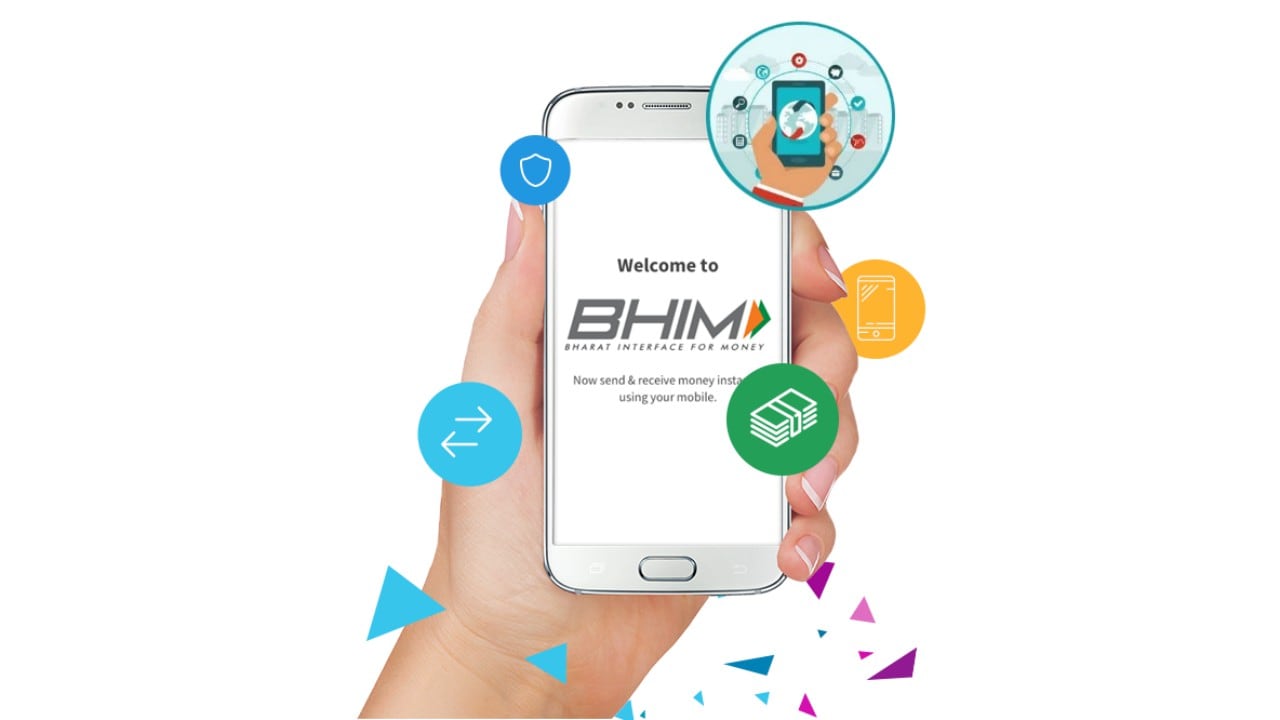
Digital payments and peer-to-peer lending apps have revolutionised the way we move money. Image: bhimupi.org.in
With companies and government encouraging consumers to route their payments via mobile wallets, users are increasingly connecting their phones to unsecured public WiFi networks, to access multiple utility apps, including their digital wallets. Many of us download apps from reference links sent by other users of the apps. These links can be manipulated by the attacker and be used to perpetrate phishing attacks to gain access to the user’s bank details and other personal information linked to the account.
A phishing attack is easily identifiable – the cybercriminal could move a letter or two around in the URL and create a bogus link almost identical to the genuine one. Once clicked, it results in the installation of a malware which then runs in the app’s background. Such attacks can be easily dodged by keeping a vigilant eye on the links or attachments sent to the user. Do not click or open them if you suspect malicious activities; what good is a 100-rupee cashback if it puts your bank balance in jeopardy!

Cybercriminals are finding new ways to bypass Google security.
As per a recent report, a 77 percent increase in banking Trojans were noted and it was also predicted that this type of exploitation would continue to grow. Unfortunately, that prediction has come true. Cybercriminals are finding new ways to bypass Google security. Their success in getting onto mobile devices means they will also explore adding additional forms of revenue like ransomware, ad click fraud, and acting as a download conduit for other types of malware. Beware of fake apps on app stores; many times, cybercriminals leverage the laxity in the hosting policies of the app store and publish bogus apps which look like the actual apps. These apps are used to harvest bank details of the user by installing malware that will monitor keystrokes or exfiltrate data using command-and-control connection signal from the attacker.
While one could say the onus lies on the financial service providers to protect customer data, safeguarding confidential information online is equally the responsibility of the user. Luckily, some simple steps can go a long way in protecting your financial information from getting breached online.
- Be sure to go through your monthly credit reports for any suspicious transactions. Often the cybercrooks steal money in multiple small transactions and the user notices it only when his bank balance reduces drastically over time.
- Use two-factor authentication for all your online accounts and sign up to receive SMS alerts or email notifications to detect any unusual activity on your account. Many companies offer this service free of cost.
- While registering for any financial service or apps, make it a point to read the customer reviews to gauge the authenticity and look for policies around customer data safety.
- Most importantly Stop, Think and Connect – Do not blindly click on e-mails or links.
- Ensure you have the appropriate security software on your devices to help you stay safe.
- It’s a combination of common sense and using the right tools that can give you a safe experience online.
Remember, if 2018 was the year of mobile malware, 2019 is the year of everywhere malware. With smart devices becoming keys to our digital lives, entrusted with a treasure trove of personal data, we must realise the importance of securing them in this connected environment. Only then will we be able to tackle this insidious threat and protect ourselves at every point of our increasingly digital life.
The author is the Vice President of Engineering and Managing Director of McAfee India
<!–
Tech2 is now on WhatsApp. For all the buzz on the latest tech and science, sign up for our WhatsApp services. Just go to Tech2.com/Whatsapp and hit the Subscribe button.
–>
10.or G2 announced sporting a 6.18-inch display, SD 636 SoC and 5,000 mAh battery
tech2 News StaffJun 28, 2019 22:22:15 IST
Tenor today announced the launch of its latest budget smartphone in India, the 10.or G2. The smartphone will be launched during Amazon Prime Day 2019 and the company has promised to reveal the price and availability details of the phone during the sale period.
Amazon Prime Day 2019 will begin at 12 am on 15 July and will last till 16 July. The smartphone is manufactured by Wingtech as part of the ‘Crafted for Amazon programme’ and features a metal body and there is a notch at the top of the screen.
Which the price of the phone hasn’t been revealed yet, we do have a hitch that the G2 will likely be priced in the Rs 8,000-12,000 bracket.
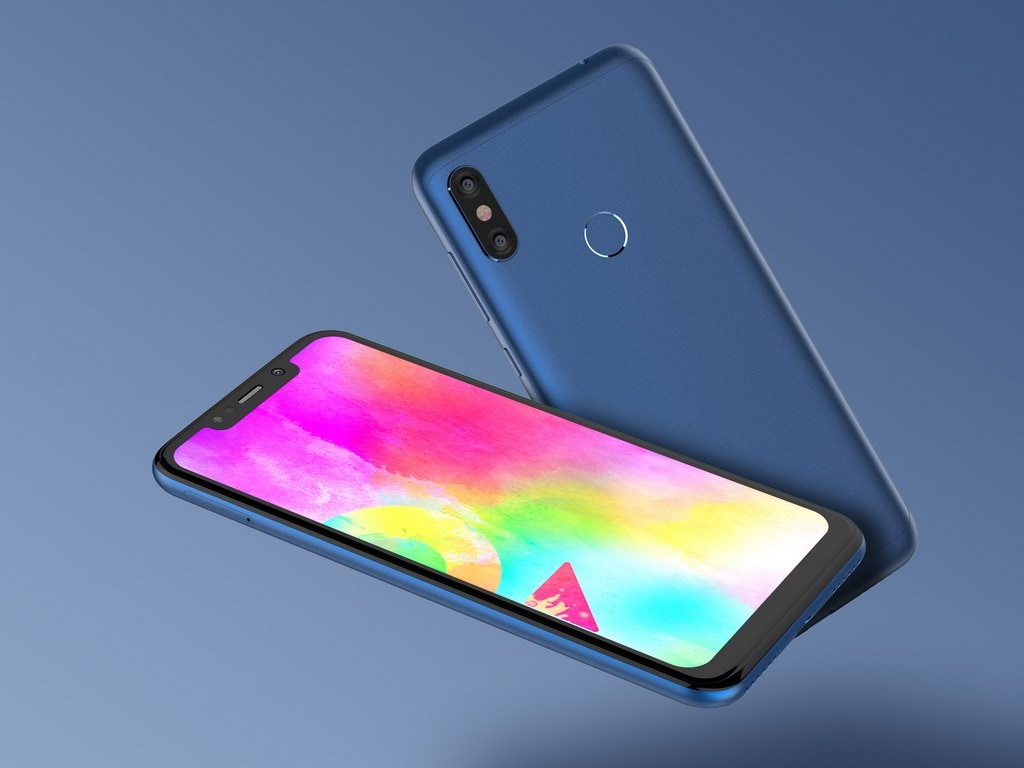
10.or G2
10.or G2: Specifications and key features
The 10.or G2 features a 6.18-inch Full HD+ display with a resolution of 2246 x 1080 pixels along with 19:9 aspect ratio and 2.5D Corning Gorilla Glass protection. Inside, the smartphone is powered by an octa-core Qualcomm Snapdragon 636 SoC coupled with an Adreno 509 GPU.
The phone is backed by 4 GB of RAM and 64 GB of internal storage, which can be further expanded up to 256 GB via a microSD card slot. On the camera front, the device features a dual-camera setup with a combination of 16 MP primary lens and a 5 MP secondary sensor accompanied by a colour correlated temperature (CCT) dual LED flash. For the front, there is a 12 MP shooter for selfies and video calling along with an LED flash.
The smartphone is backed by a 5,000 mAh battery and the company has added a 15W fast charging adapter in the mix as well. The phone features a fingerprint sensor and it runs on Android 9.0 Pie. On the connectivity front, it supports dual 4G VoLTE, Bluetooth, WiFi, GPS, dual-SIM and micro USB port.
<!–
Tech2 is now on WhatsApp. For all the buzz on the latest tech and science, sign up for our WhatsApp services. Just go to Tech2.com/Whatsapp and hit the Subscribe button.
–>
Introducing Asus Zenfone 6 With 48MP Flip Camera
Introducing Asus Zenfone 6 With 48MP Flip Camera
New Asus Zenfone 6 release with latest flagship Qualcomm Snapdragon 855 mobile platform, 8GB of Ram and 256GB of Storage. 6.4 inch NanoEdge Display with corning Gorilla Glass 6. Long lasting Battery 5000mAh with quick charge 4.0
The new ZenFone 6 defies ordinary. Its groundbreaking features include an all-screen NanoEdge display, the unique 48MP Flip Camera, and incredible battery life.
 |
| ASUS CEO Jonney Shih |
Camera:
At 48MP, ZenFone 6 has the industry’s leading-resolution main front camera with autofocus, perfect for taking fantastically clear photos, day or night, indoors or outdoors.
The dual-camera system in ZenFone 6 is equipped with a flagship Sony IMX586 sensor that’s at the pinnacle of mobile photography. The 48MP main camera delivers unprecedented resolution, and features cutting-edge Quad Bayer technology for large-pixel levels of light sensitivity.
The 13MP ultrawide secondary camera puts more of the scene in your shots, whether they’re selfies, soulmates or scenery. ZenFone 6 brings you an exciting, brand-new mobile photography experience
Flip Camera
The revolutionary Flip Camera removes the limits on your creativity and gives you the freedom to get truly inventive with your photography. Forget the past, and discover brand-new ways to stamp your personality on your photos and videos.
Flip Camera can automatically flip to capture high-resolution vertical or horizontal panorama shots. Combined with automatic shutter speed selection, taking panoramic photos is easier than ever before, with less risk of being spoiled by shaking hands
HDR+ Enhanced gives ZenFone 6 the edge when it comes to stunning daylight shots. It captures multiple different short-exposure shots and combines them algorithmically into one final photo, keeping highlights, shadows, and all the details perfectly exposed. ZenFone 6 gives you amazing photos that are even better than real life
Motion Tracking
New ASUS Zenfone 6 can capture all the action. If you have tired of moving subjects disappearing out of frame in action videos? With ZenFone 6, all you have to do is focus on the subject and the Flip Camera will automatically track it for you, with advanced electronic image stabilization (EIS) technology that helps to reduce camera shake. ZenFone 6 is always ready to capture your best video moments, clearly and sharply.
Night Mode
With Super Night mode, ZenFone 6 takes the best low-light shots you’ve ever seen. By combining multiple shots with multiple exposure values, Super Night mode brings out the finest details and most vivid colors — things that normally get lost in the dark. This pixel-level color restoration makes your night shots look truly atmospheric.
User Interface
ZenUI 6 is all about you. It combines smoothness with speed, and most importantly, it’s simple and easy to use. One-handed operation is easy with the re-designed user interface, and the newly added physical Smart Key responds instantly to your command. This time, we only give you the essentials, and it’s the fastest version of ZenUI yet. Get ready to enjoy the new ZenUI 6!
Sound
ZenFone 6 has the best of everything, including audio. The stereo dynamic speakers, driven by dual powerful NXP TFA9874 low-distortion smart amplifiers that deliver powerful, detailed and crystal-clear sound. The new ZenEar Pro earbuds are tuned by 1MORE, delivering premium sound quality to enhance your listening experience.
NanoEdge Display
ZenFone 6’s NanoEdge display gives you an extreme viewing experience. The ultraslim bezels also give it a remarkable 92% screen-to-body ratio, allowing the 6.4-inch screen to fit into a compact body.
Audio
The stereo dynamic speakers, driven by dual powerful NXP TFA9874 low-distortion smart amplifiers that deliver powerful, detailed and crystal-clear sound.
Features
- Screen Display: 6.4 inch, 1080×2340 pixels
- Camera: Flip Camera (The configuration apply same for rear and front) 48 MP, f/1.8, 26mm (wide), 1/2″, 0.8µm, Laser/PDAF , 13 MP, f/2.4, 11mm (ultrawide)
- with Dual-LED flash, HDR, auto panorama (motorized rotation)
- Video recording– [email protected]/60fps, [email protected]/60/240fps, [email protected], [email protected]; gyro-EIS (except @240/480fps)
- Dimensions: 159.1 x 75.4 x 9.2 mm (6.26 x 2.97 x 0.36 in)
- Weight: 190 g
- Battery: 5000 mAh (non-removable) Quick battery charging 18W (Quick Charge 4.0)
- Material: Corning Gorilla Glass 6 for both end
- Colors: Midnight Black, Twilight Silver
- Operating System: Android 9.0 (Pie), ZenUI 6
- Processor: Qualcomm SDM855 Snapdragon 855 (7 nm)
- CPU: Octa-core (1×2.84 GHz Kryo 485 & 3×2.41 GHz Kryo 485 & 4×1.78 GHz Kryo 485
- GPU: Adreno 640
- RAM: 6GB/8GB
- Storage: 128GB/256GB
- Card slot: MicroSD, up to 1 TB
- Sensors: Fingerprint (rear-mounted), accelerometer, gyro, proximity, compass
- Ports: USB 2.0, Type-C 1.0 reversible connector
- WLAN: Wi-Fi 802.11 a/b/g/n/ac, dual-band, Wi-Fi Direct, hotspot
- Bluetooth: 5.0, A2DP, LE, aptX HD
- SIM: Dual SIM (Nano-SIM, dual stand-by)
- Audio: stereo speakers, 3.5mm jack, 24-bit/192kHz audio, active noise cancellation with dedicated mic, DTS Headphone X
It’s expecting Price starting from 500 Euro and 38,999 INR.
Source: ASUS
Also read- OnePlus 7 Pro 5G Launched – Features, Specification, Camera
Microsoft Edge gets tracking prevention feature to block cookies while browsing
tech2 News StaffJun 28, 2019 17:22:28 IST
Microsoft is stepping up its efforts to offer better privacy to its users with a new feature for Edge.
Rolling out now with the latest Canary channel release, ‘tracking prevention’ is now available in Microsoft’s Edge preview, allowing you to select how the browser will treat tracking cookies as you browse the web.
As of now, the new tracking prevention feature can be enabled through Edge’s experimental flags by heading here and toggling the flag to “Enabled.” Once you’re through with that, simply relaunch the browser, and you’ll then be able to adjust your tracking prevention settings from “Privacy” portion of the main settings menu.
Microsoft Edge’s new tracking prevention feature. Image: Microsoft
Tracking prevention is set to “Balanced” by default, which basically tells Edge to block malicious trackers and some third-party trackers. This may have an impact on the relevance of the ads you see.
However, there are also “Basic” and “Strict” settings, which only block malicious trackers when set to ‘basic’ and the majority of third-party trackers with the latter. Choosing the strictest setting may break some websites though, something Microsoft has warned about in its blog post announcing the feature.
As noted by ZDNet, Microsoft Edge’s tracking prevention feature isn’t really a new feature, per se. The feature is, in fact, almost identical to Mozilla’s Enhanced Tracking Protection feature on Firefox.
Microsoft does note that the feature won’t work on Mac just yet because of a build bug, something the company will correct with a future update.
<!–
Tech2 is now on WhatsApp. For all the buzz on the latest tech and science, sign up for our WhatsApp services. Just go to Tech2.com/Whatsapp and hit the Subscribe button.
–>
Mark Zuckerberg tries to blame the US govt for Facebook’s inability to deal with fake news
Anirudh RegidiJun 28, 2019 09:31:16 IST
Let me get this straight, the founder of the company that operates three of the largest social media platforms in the world, platforms that are host to the data of every denizen of the digital world, a company that offers tools powerful enough to disrupt governments, undermine democracy, spread and amplify hate speech, and destabilise the world, a company that aims to “disrupt” the global financial system, the founder of this company claims that dealing with election interference from nation-states is “above his pay grade”?
Need I even bother naming the company?
Facebook founder and CEO Mark Zuckerberg dropped this gem of a statement and more at the Aspen Ideas Festival in Colorado, US.
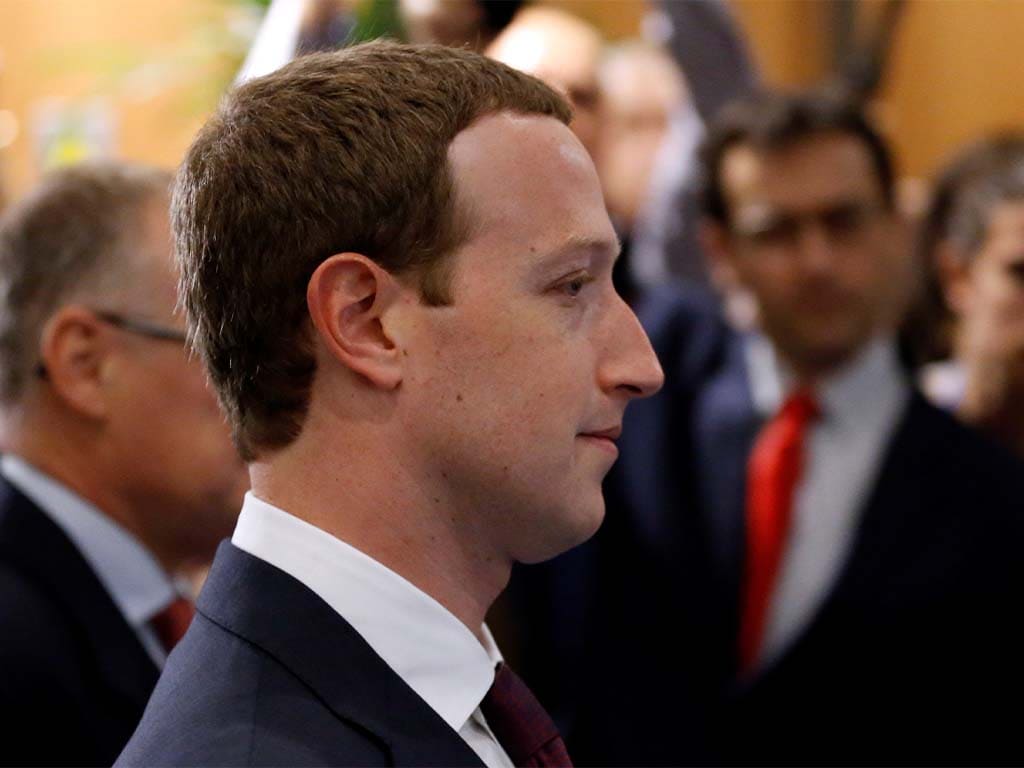
Does Zuckerberg care more for advertisers or for the world?
“As a private company, we don’t have tools to make the Russian government stop”
Zuckerberg’s disingenuous statement completely glosses over the fact that the Russian government, which stands accused of systematically undermining the 2016 US election process that saw Donald Trump elected, used tools that Facebook readily made available to anyone for the asking.
Cambridge Analytica, the firm accused of manipulating users into voting for Trump and for Brexit in the UK also used tools readily made available to them via Facebook. Yes, the data the company used to hone said tools into weapons was obtained under dubious circumstances, but these were circumstances in Facebook’s control.
The genocide of the Rohingya Muslim community in Myanmar, which also involved the rape of countless women and the murder of children, was ably supported, again, by tools that Facebook makes available to anyone for the asking.
Can Facebook do something about this abuse? ‘course it can. All Zuckerberg needs to do is withdraw the tools that enables this level of manipulation. You know, make it a platform that’s about people and not businesses? Oh, but it would be so cruel to leave overburdened advertisers in the lurch, right? Where else would they dump that excess of cash? [embedded content]
“We’ve seen increased activity from Iran and other countries.”
Well, duh. What did you think would happen, Zuckerberg?
Countries with limited military resources (and a bone to pick with “oppressive western regimes”) wouldn’t want to take advantage of a free tool, that you provide, a tool that could allow them to cause disproportionate harm to digitally dependent countries like the US and UK?
What pressure is the US government going to apply here? Force these ‘disaffected’ countries to cut their internet lines? #DeleteFacebook?
Hey, that’s an idea! #DeleteFacebook. Since the source of everyone’s trouble is Facebook, why not break up the company? Dismantle the instrument that’s disrupting the world. No more Facebook = happier, safer world. Sure, there will be other disruptive tools, but none will have the power of the Facebook, Instagram, WhatsApp trio.
Oh wait, various senators, ex-Facebook employees – including Facebook co-founder Chris Hughes, and human rights activists already think that breaking up Facebook is the best way forward. What’s preventing them from making the world a better place and, you know, doing what’s right? Facebook.
“We’ve ramped up massively on the security side, but there’s very little that we can do on our own to change the incentives for nation states to act. That’s something that is a little above our pay grade.”
Hah!
<!–
Tech2 is now on WhatsApp. For all the buzz on the latest tech and science, sign up for our WhatsApp services. Just go to Tech2.com/Whatsapp and hit the Subscribe button.
–>
Apple joins in on ICC Cricket World Cup fever with new Shot on iPhone advert
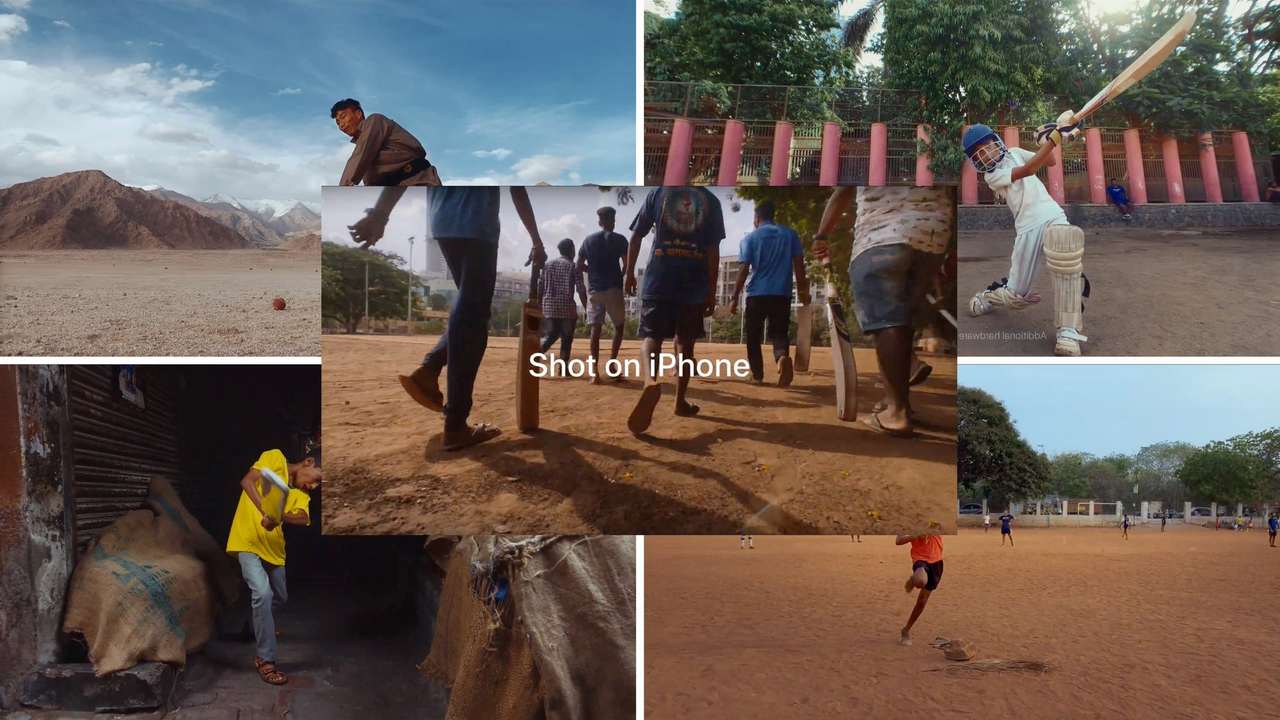
tech2 News StaffJun 27, 2019 23:12:12 IST
Cricket World Cup fever’s everywhere and while we’ve already seen Google’s Duo ads light up televisions sets during commercial breaks, Apple this week shared a new “Shot on iPhone XS” ad highlighting the sport.
The ad which is far more subtle in nature when compared to the Google Duo’s Virat Kohli and Anushka Sharma ad, coincides with the ongoing 2019 Cricket World Cup in England and Wales. The video is featured on Apple’s website in India and has also been spotted on Twitter by a number of users.
[embedded content]
“It’s the spirit of India, captured in a game, a love story that spans more than a billion hearts. Come, celebrate cricket the way India does.”
The video is part of Apple’s efforts to step up it’s localised marketing over the past few years. In previous “Shot on iPhone” videos, Apple has highlighted a teenage athlete from American Samoa, the Cuban surfing community, the Brazilian Carnival, professional hockey players in Canada, and more.
<!–
Tech2 is now on WhatsApp. For all the buzz on the latest tech and science, sign up for our WhatsApp services. Just go to Tech2.com/Whatsapp and hit the Subscribe button.
–>
Vivo unveils its first AR glasses at Mobile World Congress in Shanghai
tech2 News StaffJun 27, 2019 19:33:59 IST
At the Shanghai Mobile World Congress, Vivo showcased a prototype of its first-ever augmented reality glasses. For now, it’s being called Vivo AR Glass and it’s currently compatible with Vivo’s unnamed 5G smartphone that will be revealed soon.
The AR Glass has two cameras clearly visible on each glass, so there’s no fooling people into thinking these are a regular pair of glasses. Behind the transparent displays, the cameras have 6DoF tracking. It comes with a cable dangling from the glasses that needs to be connected to the 5G phone. According to Vivo, the AR Glass enables users to enjoy five use-cases including gaming, work, movie viewing, facial recognition, and object recognition.
As reported by The Verge, Vivo hasn’t revealed any details about the 5G smartphone yet and the phone is expected to launch in the third quarter this year. Vivo says that the glass is compatible with the phone. There aren’t any details on the pricing and release of the final iteration of the AR Glass for now. This new product will be joining the Vivo family of products that includes smartwatches, AR glasses and headphones apart from the 5G smartphone.
<!–
Tech2 is now on WhatsApp. For all the buzz on the latest tech and science, sign up for our WhatsApp services. Just go to Tech2.com/Whatsapp and hit the Subscribe button.
–>
Study Techniques to Master Biology
Study Techniques to Master Biology
Biology is the study of living organisms. It helps us to know about ourselves and our surrounding environment. The students aspiring to become doctors or to get into the research field can go for Biology as a subject in higher classes.
They need to master the subject if they want to pursue higher education with Biology. For this, they need to keep some important points in mind which are mentioned below.
Learn the Important Terminologies
The important scientific terminologies should be on the tips of the Biology students. These terminologies are taught since the lower classes so that the students memorize them for a longer period of time.
A master in Biology should know all the scientific terminologies. You can break down each term to know its meaning. This will help you memorize the terms easily.
Master the Basics
You should know the basic concepts before you learn specific ones. The basic concepts lay the foundation for specific concepts. A good understanding of the concept helps you grasp it easily when you study its advanced versions.
Diagrams
These are an important part of Biology. You should know what the structure of a heart or a brain looks like if you are studying Biology. The diagrams help you understand the topic better and remember the information.
Also, diagrams make a topic self-explanatory. For eg., if you want to explain active and passive transport, you can explain it easily with the help of a diagram to score well.
Practical Applications
You can perform laboratory experiments to practically apply the theory. This will help you retain things for a longer period of time. When you perform something on your own, you understand it better.
Biology is not such a difficult subject. Everything related to Biology revolves around you day and night. If you have the basic knowledge of Biology, you can definitely fare well in the subject.
For any information on Biology related topics such as protoplasm, cytoplasm function, manure, fertilizers, etc. visit BYJU’S website or subscribe to BYJU’S YouTube channel for interesting video lessons. You can also download BYJU’S app for further reference.
[embedded content]
Mi CC9’s new leaked images show off its back panel and retail box
tech2 News StaffJun 27, 2019 12:58:32 IST
Xiaomi has recently partnered with China-based Meitu Technologies to launch a selfie-centric smartphone series. According to the leaks, the first two smartphones of the series are expected to be named as Mi CC9 and Mi CC9e and will officially be launched on 2 July.
Now Xiaomi and its CEO Lei Jun have shared a few images on Weibo teasing the back panel of Mi CC9 and its retail box. As per the images, the upcoming Xiaomi smartphone will have a glossy back with no physical fingerprint sensor at the back. And since as per the previous leaks, there is no physical fingerprint sensor at the front as well, it is speculated that the phone will feature in display fingerprint sensor. Mi CC9 will have two physical speakers and a USB Type-C port. In a post by Xiaomi CC product manager Lao Wei, the image of the retail box of MI CC9 was also revealed.

Image: Weibo
Mi CC9 specifications
The rumoured specifications include a 6.39-inch full HD+ (1080 x 2340 pixels) AMOLED display running on a Qualcomm Snapdragon 730 chipset. With a battery capacity of 4,000 mAh, it could come with 27 W fast charging support. In terms of camera hardware, it could sport a triple-camera system with the 48 MP Sony IMX586 sensor, a 16 MP and 12 MP lenses.

Mi CC9. Image: Weibo
The front camera could have a 32 MP sensor for selfies. Other features in the phone include an in-screen fingerprint sensor, USB Type-C support, Hi-Res audio support and an IR blaster.
Mi CC9e specifications
This is going to be the smaller variant of the two that will come with a 5.97-inch full HD+ (1080 x 2340 pixels) AMOLED display, running on a Qualcomm Snapdragon 710 chipset. It will sport a smaller battery capacity of 3,500 mAh and have 18 W fast charging support. There’s also a slight downgrade in the camera sensors apart from the primary lens. It will supposedly sport the 48 MP Sony IMX582 sensor along with an 8 MP and 5 MP sensors, while there’s a 32 MP sensor on the front camera.
Mi CC9 and Mi CC9e pricing
Both the phones have multiple RAM and storage options. On the Mi CC9, the 6 GB + 128 GB variant is priced at CNY 2,599 (approx. Rs 26,200), 8 GB + 128 GB at CNY 2,799 (approx. Rs 28,200) and the 8 GB + 256 GB is priced at CNY 3,099 (approx. Rs 31,200).
Coming to the Mi CC9e, the 6 GB + 64 GB variant is priced at CNY 1,599 (approx Rs 16,100), 6 GB + 128 GB at CNY 1,899 (approx Rs 19,100) and the 8 GB + 128 GB is priced at CNY 2,199 (approx Rs 22,100).
The Mi CC9 and Mi CC9e are going to be officially launched in China on 2 July.
<!–
Tech2 is now on WhatsApp. For all the buzz on the latest tech and science, sign up for our WhatsApp services. Just go to Tech2.com/Whatsapp and hit the Subscribe button.
–>
LG W30 first impressions: A good budget offering from LG after a very long time
Nandini YadavJun 26, 2019 20:41:37 IST
LG has launched three new smartphones in India today— the W10, W30, and W30 Pro. Of the three, the LG W30 Pro is currently unavailable, with the price and availability still concealed. The W10 has been launched at Rs 8,999 and the W30 was announced at Rs 9,999. I briefly used the LG W30 at the event, and I’d like to walk you through my first impressions of the device.
Looks decent and is surprisingly light
The LG W30 has a plastic build, but the textured back and the pseudo-glass metal sandwich design gives it a premium look. The device comes in a grey and a blue colour variant, and it’s probably the only time I would say that the grey looks better than the blue variant. The latter has some colour gradients (blue with hints of yellow), which personally didn’t look appealing to me.
But when you pick up the phone, the first thing that you will NOT feel is the weight in the device. Despite a 4,000 mAh battery powering it, the LG W30 is pretty light. But what’s not pretty is the size of the device!
Big display, big phone, small hands, slippp…
Thanks to its 6.26-inch display, the LG W30 is definitely not meant for one-handed use. I was trying to click a few selfies from the phone, and I almost dropped it at least three times. Another design detail that I noticed about the phone was the Realme-like ring around the camera lens at the back. The LG W30 has a red colour ring around its primary sensor at the rear.
The display quality seemed good to me. The colours are nice and bright] and even the tiny text looked sharp and easy to read. The brightness on auto mode did make the screen a little dull a few times, though. Another thing about the smartphone’s display, which is a bit gimmicky yet interesting, is the customisable option for the notch. You can head to Settings>Display>Notch and choose between the waterdrop, V-notch or a full bezel on the top.
I love the stock Android UI, but the experience isn’t lag-free
Besides interesting pricing, what has also changed with LG’s W-Series is the user interface. The W-Series of phones use a stock Android experience based on Android Pie. Of course, the stock Android animations are limited, but the basic UI is easy to use.
In terms of performance, the LG W30 is powered by a Helio P22 chip, with 3 GB of RAM and 32 GB of internal storage. While the overall performance, in the brief time I used the device, seemed decent, I did find the camera app lagging a few times when I was testing the rear camera.
For a 1oK phone, the camera is cool.com
At Rs 9,999, the LG W30 comes with a triple-camera setup, comprising a 12 MP low-light system, 13 MP wide-angle system, and a 2 MP depth sensor. For selfies, it has a 16 MP sensor. When I used the phone, I realised that the viewfinder does not show good previews but the processed images come out pretty decent. You can check out some of the camera samples in the Flickr album below. Some of the shots of vehicles were clicked from a moving car to check the image stabilisation on the phone, and they look good.

Interestingly though, the LG W30 comes with a low-light sensor, but the results didn’t look too good in low light. The low-light image I clicked just looked over saturated. You will find this sample in the Flickr album as well.
LG W30 seems like a good addition to the mid-budget smartphone segment
In the sub-Rs 10,000 category, the LG W30 will compete with the likes of Realme 3 Pro, Redmi Note 7A, and Samsung Galaxy M30. And with the triple camera sensor, stock Android UI, and 4,000 mAh battery, the LG W30 looks like a good deal.
Now, what we just wait to see is how well the LG W30 perform in the long haul. Does it make for a good daily driver and does it have the potential to beat its competitors? You will get all these answers in our review of the LG W30 coming soon! Stay tuned…
<!–
Tech2 is now on WhatsApp. For all the buzz on the latest tech and science, sign up for our WhatsApp services. Just go to Tech2.com/Whatsapp and hit the Subscribe button.
–>
OnePlus 7 Pro 5G Launched – Features, Specification, Camera
New OnePlus 7 Pro 5G Unveiled
OnePlus 7 Pro is the most advance screen ever comes with 6.67 inch Fluid AMOLED display and running on Oxygen OS.
OnePlus 7 Experience true speed with up to 12 GB of RAM with 4000mAh Battery, Featured10-layer liquid cooling system to keep your device cool while playing the games with 2K+OLED Resolution and HDR10+ display.
Experience unrivalled smoothness and clarity with a 90 Hz refresh rate and QHD+ resolution.
With a QHD+ resolution (3120 by 1440 pixels), the OnePlus 7 Pro delivers a truly cinematic experience. Videos and games look and feel better, with deeper blacks, brighter highlights, and crystal-clear details. Experience a high-resolution display with a 90 Hz refresh rate, designed to display your content with dramatic clarity.
Entirely notch-free and beautifully curved, the OnePlus 7 Pro’s 6.67-inch QHD+ Fluid AMOLED display offers a high screen-to-body ratio for a more immersive experience, whether you’re gaming, watching a movie, or browsing the web.
The display curves Curved edge-to-edge design over the edges for an arresting design and an immersive viewing experience with 90 Hz Refresh Rate. Every tap, swipe and button press feels instant and effortless thanks to the world’s first AMOLED display with a 90 Hz refresh rate.
Its price around 48,990 INR
Operating System
Oxygen OS- To make your user experience intuitive and smooth and developed software that’s easy to understand and simple to use. Updated navigation gestures allow you to access all of your favorite apps and services with a single swipe.
Camera-
Back Camera – Triple Camera with 48 MP
Capture life in brand new ways with a 48 MP main camera, ultra wide angle lens and 3x optical zoom. Combined with smart scene recognition and new Nightscape 2.0 technology, the OnePlus 7 Pro is your personal photo studio.
Front Camera- Pop-up camera – 16MP
Popping with style, the OnePlus 7 Pro’s front-facing pop-up camera was designed to withstand sliding out up to 300,000 times.
Dust Resistance – Pop up camera features an anti-dust mechanism to keep dust out of your OnePlus 7 Pro.
3x Optical Zoom
A new Ultra-Wide Angle Lens designed to increase the range of your photos with 3x Optical Zoom.
Capture the distance with three times optical zoom, for detailed shots even from afar.
Night Mode
Designed to keep your immersion eye-strain free, your display automatically filters out blue light and optimizes its brightness level to ensure a comfortable viewing experience.
With Nightscape 2.0, cityscapes shot at night look bright and detailed. Thanks to a larger sensor with a wider dynamic range and faster processing speeds, shooting stunning night scenes simply takes a single tap.
Battery
With a 4000 mAh battery, you’ll easily power through the day and more, while Warp Charge technology gets your OnePlus 7 Pro ready to go in just 20 minutes.
Performance
The Qualcomm® Snapdragon 855 Mobile Platform, and up to 256 GB of storage. OnePlus7 hardware and software work together for an experience that is consistently Fast and Smooth.
855 Mobile Platform, and up to 256 GB of storage. OnePlus7 hardware and software work together for an experience that is consistently Fast and Smooth.
UFS 3.0
Brand-new UFS 3.0 storage technology increases read and write speeds by up to 79%, making it quicker than ever to open apps, download files, or transfer data.
Screen Recorder
Effortlessly record what you watch.
Screen recorder allows you to capture anything from an awesome gaming victory, to an important online tutorial. Both internal and ambient sounds are recorded in clear high quality so you’ll never miss a single detail.
Replying to messages while watching videos or playing games is now more convenient than ever. With landscape mode, you no longer have to go through the tedious process of exiting one app to reply in another.
OnePlus Shelf
A safe and secure space.
OnePlus Shelf is the perfect space to your wallet, calendars, memos and recently used apps safe. Swipe left from your homescreen to discover this user-friendly widget that helps you organize your life.
Basic Specifications-
- Dimensions: 162.6×75.9×8.8mm
- Weight: 206g
- Back Material: 3D Corning® Gorilla® Glass
- Colors: Mirror Gray/Nebula Blue/Almond
- Operating System: OxygenOS based on Android
 9
9
- CPU: Qualcomm® Snapdragon
 855 (Octa-core, 7nm, up to 2.84 GHz), with Qualcomm AI Engine
855 (Octa-core, 7nm, up to 2.84 GHz), with Qualcomm AI Engine
- GPU: Adreno 640
- RAM: 6GB/8GB/12GB LPDDR4X
- Storage : 128GB/256GB UFS 3.0 2-LANE
- Sensors: In-display Fingerprint Sensor, Accelerometer, Electronic Compass, Gyroscope, Ambient Light Sensor, Proximity Sensor, Sensor Core, Laser Sensor
- Ports: USB 3.1 GEN1, Type-C, Support standard Type-C earphone,
- SIM- Dual nano-SIM slot
- Battery: 4000 mAh (non-removable) Warp Charge 30 Fast Charging (5V/6A)
- Vibration: Haptic Vibration
- Buttons: Gestures and on-screen navigation support , Alert Slider
- Audio : Dual stereo speakers, Noise cancellation support, Dolby Atmos
- Unlock Options: In-display Fingerprint, Face Unlock
Connectivity
- LTE: 4×4 MIMO, LTE Cat. 18, DL 5CA, UL CA, Supports up to DL Cat18 /UL Cat13 (1.2Gbps /150Mbps), depending on carrier support
- FDD LTE: B1,2,3,4,5,7,8,12,13,17,18,19,20,25,26,28,29,32,66
- TDD-LTE: B34,38,39,40,41
- TDS: B34,39
- UMTS: B1,2,4,5,8,9,19
- CDMA: BC0,BC1
- GSM: B2,3,5,8
- Wi-Fi: 2×2 MIMO, Wi-Fi 802.11 a/b/g/n/ac, 2.4G/5G
- Bluetooth : Bluetooth 5.0, support aptX & aptX HD & LDAC & AAC
- NFC: NFC enabled
- Positioning: GPS (L1+L5 Dual Band), GLONASS, Galileo (E1+E5a Dual Band), Beidou, SBAS, A-GPS
Display
- Size: 6.67 inches(The corners of the screen are within a standard rectangle. Measured diagonally, the screen size is 6.67 inches in the full rectangle and 6.46 inches accounting for the rounded corners.)
- Resolution: 3120 x 1440 pixels 516ppi
- Aspect Ratio: 19.5:9
- Type: Fluid AMOLED
- Cover Glass: 3D Corning Gorilla Glass
Camera
Front Camera – 16MP
- Sensor: Sony IMX471
- Megapixels: 16
- Pixel Size: 1.0 µm
- EIS: Yes
- Autofocus: Fixed Focus
- Aperture: f/2.0
- Video: 1080P video at 30fps, Time-Lapse
- Features: Face Unlock, HDR, Screen Flash, Face Retouching
Rear Camera- Triple Camera with 48MP
- Sensor: Sony IMX586
- Megapixels: 48
- Pixel Size: 0.8 µm/48M; 1.6 µm (4 in 1)/12M
- Lens Quantity: 7P
- OIS: Yes
- EIS: Yes
- Aperture: f/1.6
- Optical Zoom: 3×
- Flash: Dual LED Flash
- Autofocus: Multi Autofocus (PDAF+LAF+CAF)
- Video: 4K video at 30/60 fps, 1080P video at 30/60 fps,
- Super Slow Motion: 1080p video at 240 fps, 720p video at 480 fps, Time-Lapse,Video Editor
- Feature: UltraShot, Nightscape, Studio Lighting, Portrait, Pro Mode, Panorama, HDR, AI Scene Detection, RAW Image
Multimedia
- Audio Supported Formats
Playback: MP3, AAC, AAC+, WMA, AMR-NB, AMR-WB, WAV, FLAC, APE, OGG, MID, M4A, IMY, AC3, EAC3, EAC3-JOC, AC4
Recording: WAV, AAC, AMR
- Video Supported Formats
Playback: MKV, MOV, MP4, H.265(HEVC), AVI, WMV, TS, 3GP, FLV, WEBM
Recording: MP4
- Image Supported Formats
Playback: JPEG, PNG, BMP, GIF
Output: JPEG, PNG
Source: OnePlus
Instagram is now going to begin injecting advertisements into your Explore page
tech2 News StaffJun 26, 2019 22:43:48 IST
What was only a matter of time has finally happened – Instagram is going to start injecting ads right into its Explore page soon.
The Facebook-owned company in a blog post formally stated that the company will start placing ads on the Explore section of the app in the coming weeks.
Wondering how you’re going to come across an ad? Well, once users tap on a photo or video on Explore, they will see ads in between posts as they scroll, just like on the regular feed. Instagram clarified that the ads on the Explore page will only show ads only once a user starts scrolling, instead of placing the ads slapdash on the grid-style tiles of the Explore page.
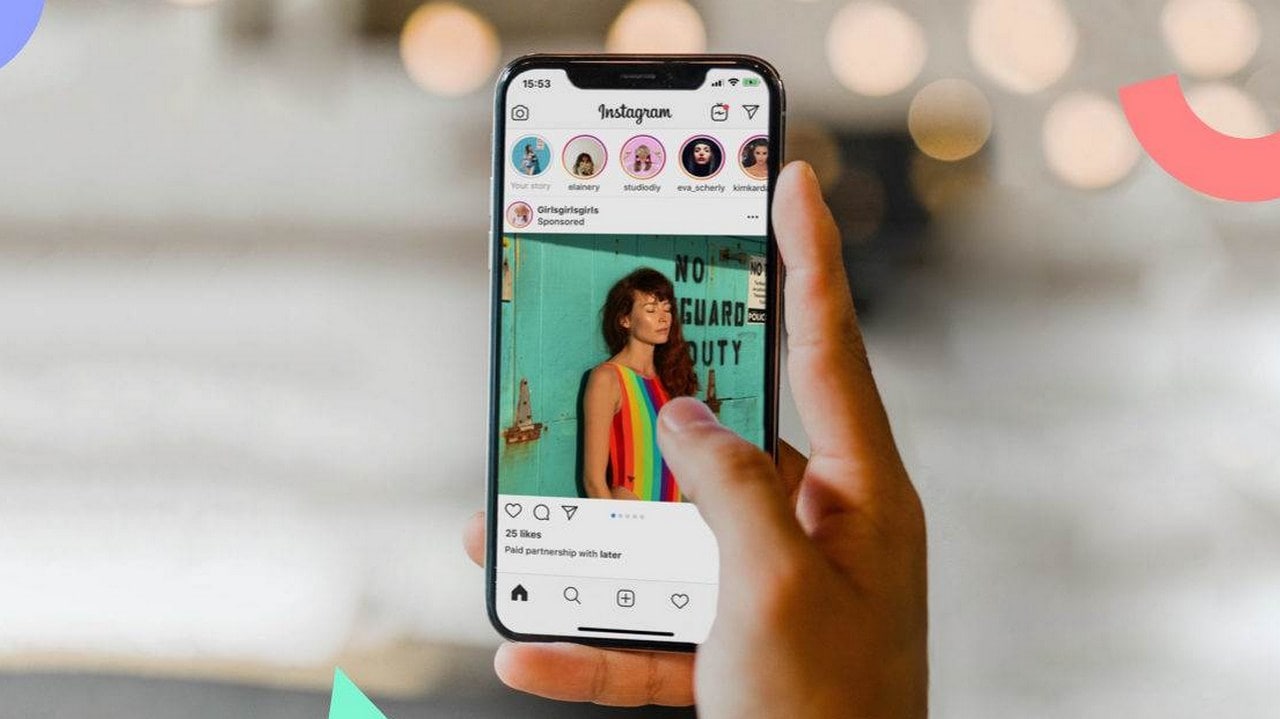
Instagram users will begin seeing ads on the Explore page. Image: Instagram
But why have they left the grid untouched by ads for now? We don’t know yet.
For those of aren’t too familiar, the Explore page is a handy place where users can discover new content that’s not displayed on their feed. This page essentially recommends posts that algorithms predict a user would like based on the nature of posts they’ve looked at in the past. The ‘Explore’ tab also categories posts (such as fashion, architecture, and food) given the fact that people have varied interests.
In fact, Instagram through internal research says that more than 50 percent of accounts globally visit the Explore page every month.
Instagram already allows ads in Stories and the regular feed, so bringing them to yet another place would really mean much for regular Instagrammers. But the move certainly drives home the fact that Instagram is an ad-run business that needs to meet brands’ expectations — regardless of whether users like it or not.
<!–
Tech2 is now on WhatsApp. For all the buzz on the latest tech and science, sign up for our WhatsApp services. Just go to Tech2.com/Whatsapp and hit the Subscribe button.
–>
India needs time to stabalise after BS-VI before moving to full EVs: Honda
Press Trust of IndiaJun 26, 2019 16:48:08 IST
Japanese automobile major Honda Tuesday said the two-wheeler industry in India needs more time to stabilise after BS-VI changeover before moving to full electric vehicles (EVs). Joining its Indian counterparts Hero MotoCorp, Bajaj Auto and TVS Motor Co in opposing the Niti Aayog’s proposal to completely ban two-wheelers that are powered by internal combustion engines (ICEs) of up to 150cc from 2025, the company called for a plan jointly prepared by all concerned stakeholders before taking such a step.

Representational image.
Honda, which is present in the country through a wholly-owned subsidiary Honda Motorcycle and Scooter India (HMSI), said despite its 25 years of experience of developing and selling electric two-wheeler adoption of such vehicles has remained a challenge due to various factors.
“The industry needs more time to stabilise after BS-VI changeover before we take the next step of moving from IC engine technology, especially considering Indian customer requirement of higher daily commuting distance and price consciousness,” HMSI said in a statement.
From April 2020, India will implement strict BS-VI emission norms across the country for all categories of new vehicles. The company further said, “Honda requests a well-laid-out plan jointly prepared by government, industry and all concerned stakeholders looking at the aspects of air pollution, energy security, cost of technology, availability of raw materials and Infrastructure while addressing employment impact to increase stepwise penetration of EVs (electric vehicles).”
Globally, Honda has an experience of developing and selling electric two-wheelers for over 25 years.
“Due to multiple factors, including vehicle cost, riding performance, range and infrastructure, customers’ adoption of EV is still a major challenge,” it said.
On Monday, India’s big three two-wheeler makers — Hero MotoCorp, Bajaj Auto and TVS Motor Co — hit out at the Niti Aayog’s plan to push for 100 per cent electric vehicle for up to 150 cc engine capacity, saying such a transition was completely uncalled for and could jeopardise the industry.
<!–
Tech2 is now on WhatsApp. For all the buzz on the latest tech and science, sign up for our WhatsApp services. Just go to Tech2.com/Whatsapp and hit the Subscribe button.
–>
Realme CEO claims it will be the first company to come out with a 64 MP camera phone
tech2 News StaffJun 26, 2019 09:59:26 IST
As more and more companies try and jump on the 48 MP camera hype, Realme is clearly not looking to wait around for the Samsung and Xiaomi this year to introduce the first 64 MP camera phone.
Realme CEO Madhav Sheth, who loves to talk about upcoming smartphone tech on Twitter,
Working on the new premium killer! Introducing world’s first smartphone camera with 64MP GW1 largest 1/1.72” sensor and mega 1.6µm pixel with amazing clear shots in low light too. RT if you want to see more “knockout” shots. #DareToLeap pic.twitter.com/D54xNFdaVm
— Madhav X (@MadhavSheth1) June 24, 2019 ” target=”_blank”>has now posted a camera sample that was shot on a mysterious new Realme phone, claiming that it will be the world’s first phone with a 64 MP Samsung ISOCELL Bright GW1 sensor. The CEO also confirmed in a subsequent tweet that the phone in question will be launched in India before anywhere else.
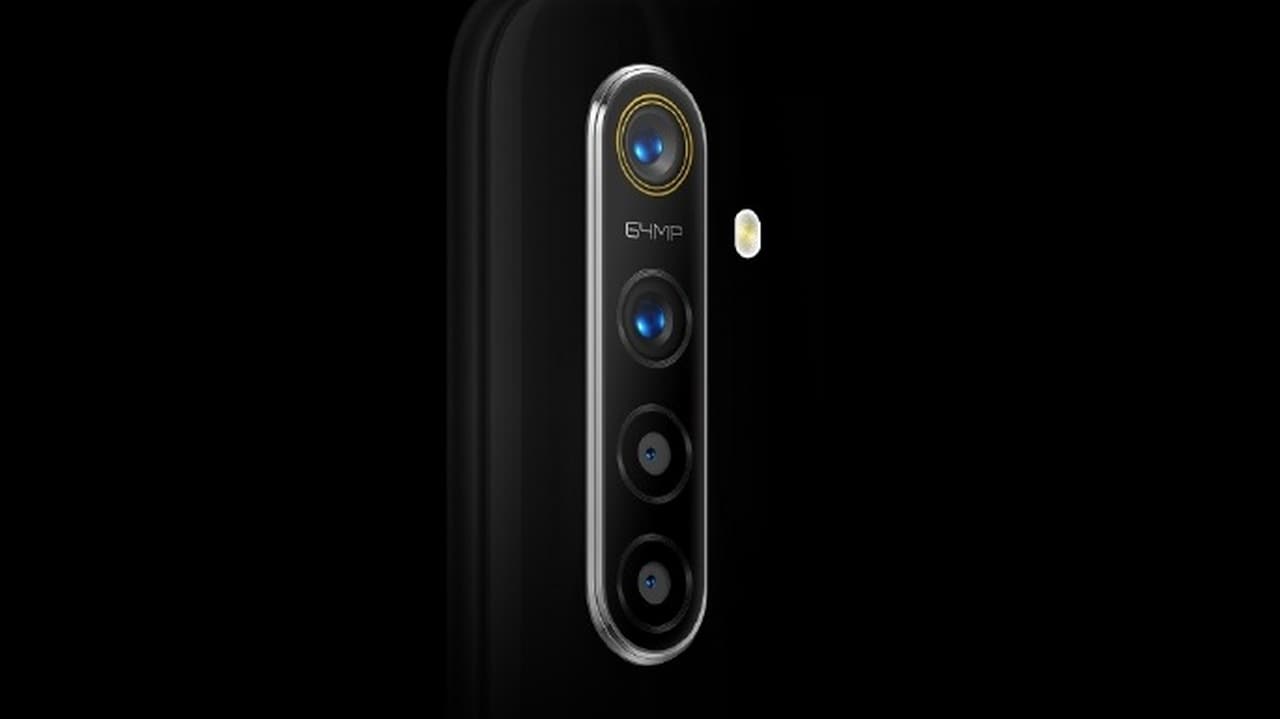
Realme’s yet to reveal more on what the upcoming quad-camera phone will feature. Image: Weibo/ Realme
The new 64 MP ISOCELL Bright GW1 image sensor, unveiled recently by Samsung features a 4-in-1 pixel technology to merge four 0.8 micron pixels into a single 1.6-micron pixel to deliver binned 16 MP photos in low-light conditions and 64 MP images in brighter conditions.
Working on the new premium killer! Introducing world’s first smartphone camera with 64MP GW1 largest 1/1.72” sensor and mega 1.6µm pixel with amazing clear shots in low light too. RT if you want to see more “knockout” shots. #DareToLeap pic.twitter.com/D54xNFdaVm
— Madhav X (@MadhavSheth1) June 24, 2019
The upcoming Realme phone will also likely support up to 100db real-time HDR, 1080p slow-motion video capture as well as Super PD auto-focusing technology.
Here’s a glimpse of what this realme prototype can do. Even compared it with some other flagship model in a more premium price segment. Buckle up and #DareToLeap to some real exciting camera experience this year. pic.twitter.com/kVgz9griQy
— Madhav X (@MadhavSheth1) June 25, 2019
While not a lot is known about this mysterious Realme phone, the company did take to its Weibo account to state that the same smartphone will also be Realme’s first smartphone with a quad-camera setup. Now what the other three lenses will cater to, is still something that we’ll have to wait for.
<!–
Tech2 is now on WhatsApp. For all the buzz on the latest tech and science, sign up for our WhatsApp services. Just go to Tech2.com/Whatsapp and hit the Subscribe button.
–>
Mi CC9 and Mi CC9e pricing, specifications and photo reportedly leaked
tech2 News StaffJun 25, 2019 23:04:36 IST
Xiaomi had recently announced its partnership with Meitu for a new lineup of smartphones called the CC series. Both the companies will be collaborating to bring selfie-focussed phones in the future. And if recent leaks are to be believed, two phones from the series are going to be called the Mi CC9 and Mi CC9e.
Twitter tipster Mukul Sharma tweeted out mentioning the two variants along with the specifications and pricing. Apart from that, an alleged photo of the Mi CC9 also leaked out on Weibo. It looks like the phone will have an all-screen display and an in-screen fingerprint sensor.
Mi CC9 specifications
The rumoured specifications include a 6.39-inch full HD+ (1080 x 2340 pixels) AMOLED display running on a Qualcomm Snapdragon 730 chipset. With a battery capacity of 4,000 mAh, it could come with 27 W fast charging support. In terms of camera hardware, it could sport a triple-camera system with the 48 MP Sony IMX586 sensor, a 16 MP and 12 MP lenses. The front camera could have a 32 MP sensor for selfies. Other features in the phone include an in-screen fingerprint sensor, USB Type-C support, Hi-Res audio support and an IR blaster.
Mi CC9e specifications
This is going to be the smaller variant of the two that will come with a 5.97-inch full HD+ (1080 x 2340 pixels) AMOLED display, running on a Qualcomm Snapdragon 710 chipset. It will sport a smaller battery capacity of 3,500 mAh and have 18 W fast charging support. There’s also a slight downgrade in the camera sensors apart from the primary lens. It will supposedly sport the 48 MP Sony IMX582 sensor along with an 8 MP and 5 MP sensors, while there’s a 32 MP sensor on the front camera.
Here are the alleged specifications of the Xiaomi CC9.#Xiaomi #xiaomicc9 #xiaomicc9e pic.twitter.com/65kkkviDC1
— Mukul Sharma (@stufflistings) June 23, 2019
Mi CC9 and Mi CC9e pricing
Both the phones have multiple RAM and storage options. On the Mi CC9, the 6 GB + 128 GB variant is priced at CNY 2,599 (approx. Rs 26,200), 8 GB + 128 GB at CNY 2,799 (approx. Rs 28,200) and the 8 GB + 256 GB is priced at CNY 3,099 (approx. Rs 31,200).
Coming to the Mi CC9e, the 6 GB + 64 GB variant is priced at CNY 1,599 (approx Rs 16,100), 6 GB + 128 GB at CNY 1,899 (approx Rs 19,100) and the 8 GB + 128 GB is priced at CNY 2,199 (approx Rs 22,100).
The Mi CC9 and Mi CC9e are going to be officially launched in China on 2 July.
<!–
Tech2 is now on WhatsApp. For all the buzz on the latest tech and science, sign up for our WhatsApp services. Just go to Tech2.com/Whatsapp and hit the Subscribe button.
–>
Apple TV App Launches Over 100 Countries- Subscribers Can Download Game of Thrones Show
Apple TV App Launches Over 100 Countries- Subscribers Can Download Game of Thrones
The all-new Apple TV app, which brings together all the ways to watch TV into one app, is available starting today in over 100 countries across iPhone, iPad, Apple TV and select Samsung smart TVs.
With the free iOS 12.3 and tvOS 12.3 software update, customers around the world can now subscribe to Apple TV channels within the Apple TV app — paying for only the ones they want — and watch on demand directly in the app. In the US, Apple TV channels include popular services such as HBO, Starz, SHOWTIME, Smithsonian Channel, EPIX, Tastemade and new services like MTV Hits, with more to be added over time around the world.
Through Family Sharing, up to six family members can share subscriptions to Apple TV channels using just their Apple ID and password. Subscribers can watch and download shows and movies both online and offline, making the Apple TV app the first and only place where HBO subscribers can download movies and shows such as “Game of Thrones” for offline viewing.
Also, users worldwide can enjoy personalized recommendations of shows and movies from more than 150 video apps and streaming services and over 100,000 iTunes movies and TV shows, including the largest collection of 4K HDR titles available to browse, buy or rent — all within the new Apple TV app.
The Watch Now section features Up Next, where users can quickly find and watch their favorites with activity synced across devices, as well as explore expertly curated collections based on a secure and comprehensive understanding of users’ viewing interests.
Customers can also enjoy a new, dedicated Kids section, highlighting editorially handpicked shows and movies for kids of all ages, alongside the breakthrough Sports section that makes it easy to find games and receive notifications about favorite teams and leagues. Additionally, customers can find their purchased movies and shows from iTunes in the redesigned Library tab, now organized by Recently Added, Downloaded, Genres and more.
Availability
- The all-new Apple TV app is available today for iPhone, iPad and Apple TV customers in over 100 countries with iOS 12.3 and tvOS 12.3, and will be available on Mac this fall.
- Starting today, the Apple TV app offering Apple TV channels and iTunes movies and TV shows will also be available on all 2019 Samsung smart TVs and select 2018 models.
- Also starting today, customers with AirPlay 2-enabled Samsung smart TVs can effortlessly play videos and other content from their iPhone, iPad or Mac directly to their smart TVs. Customers must update to iOS 12.3 or macOS 10.14.5 to play or mirror to AirPlay 2-enabled smart TVs.
- Customers with eligible VIZIO, LG and Sony smart TVs will be able to enjoy AirPlay 2 and HomeKit support later this year.
This fall, Apple TV+, Apple’s original video subscription service, will be available in the Apple TV app.
Source: Apple
